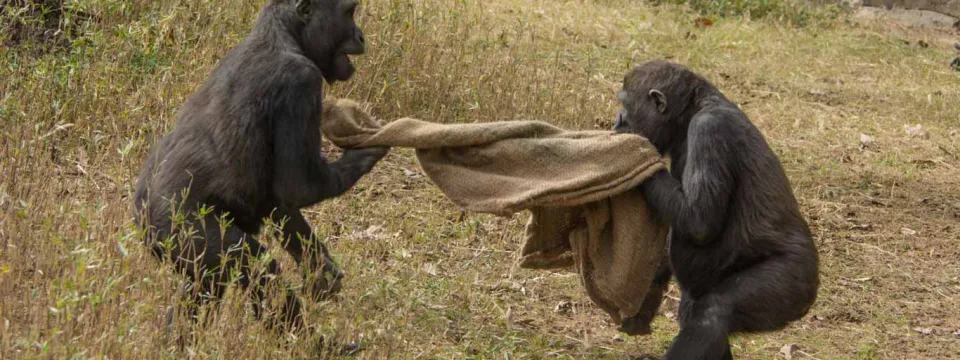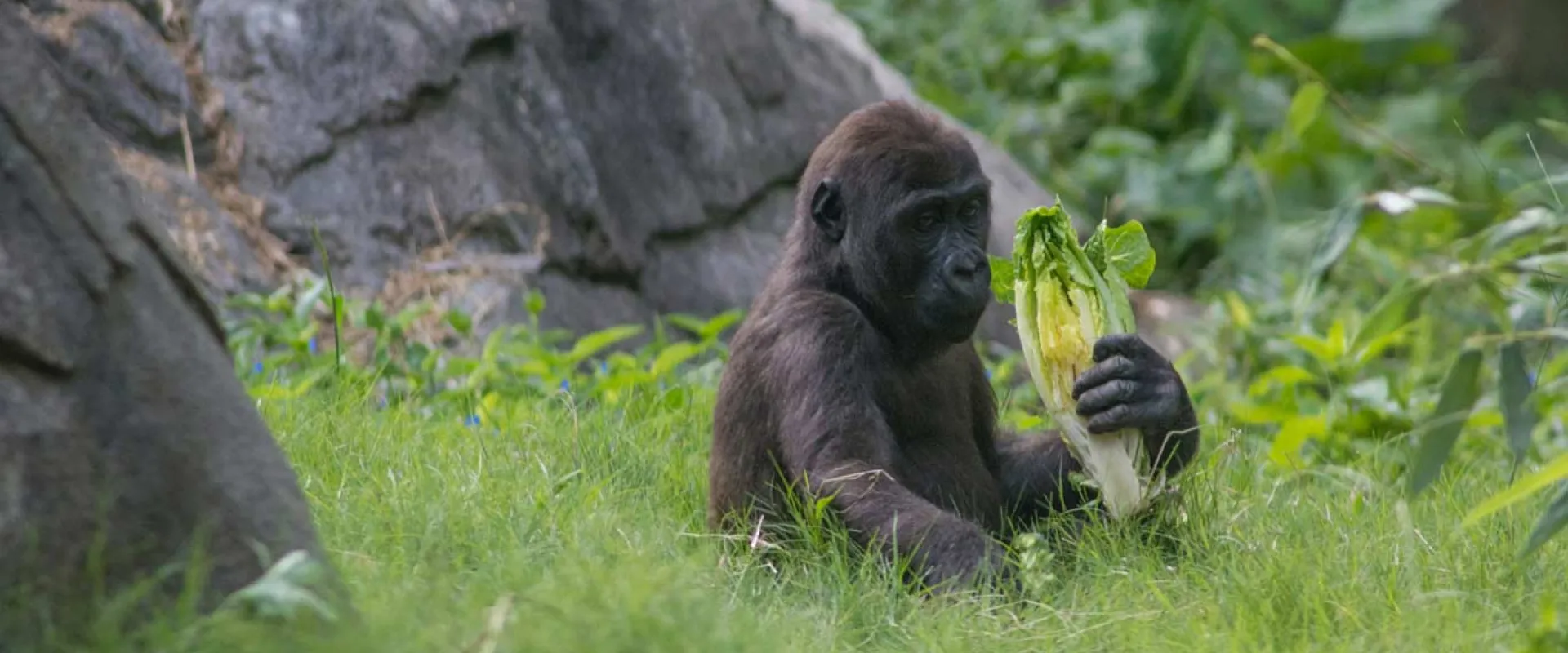Emily Lynch, Associate Curator of Research for the North Carolina Zoo
Animals at the Zoo need variety and challenges, too. We provide these through the addition of novel items or enrichment on a daily basis. What might look like “toys” when you walk by an exhibit, items like logs, plastic jugs, or even a blanket, are actually new resources we have added to add complexity an animal’s habitat, which ultimately promotes an animal’s well-being. These resources can be anything that encourages behaviors that occur in the wild, such as foraging or nesting, or that simply adds an engaging challenge or puzzle to the animal’s day.
Below: The Zoo's western lowland gorilla troop members
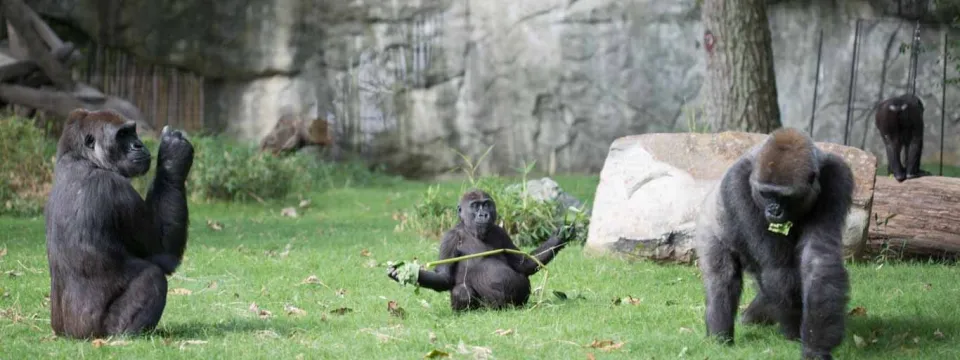
But how do we know which types of enrichment work for different species or even different individuals? Scientific research, of course! Careful data collection and analysis allow us to evaluate the best enrichment approach and, in the end, the best way to ensure the well-being of our animals. In simple terms, we test for which items the animals use the most. A great example of this process comes from work done with our gorillas
Because gorillas are so large and their diet is primarily low-quality vegetation, they must spend a large portion of their day foraging; a large male can eat up to 40lbs of vegetation per day! A typical day for wild gorillas consists of foraging, resting for a bit, then traveling to new places to forage. Here at the Zoo, in addition to naturalistic habitats, we want to encourage the animals to exhibit natural behaviors because, in the end, this promotes well-being. For the gorillas, then, this would mean creating an environmental enrichment program that facilitates a lot of foraging.
Below: Picture 1: Bomassa foraging for food
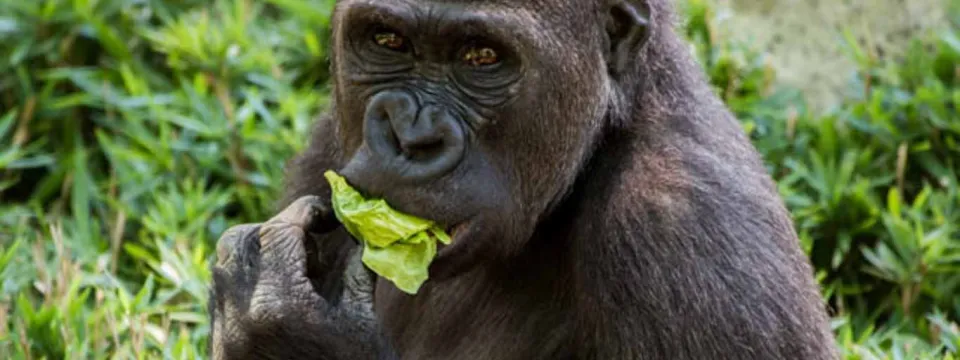
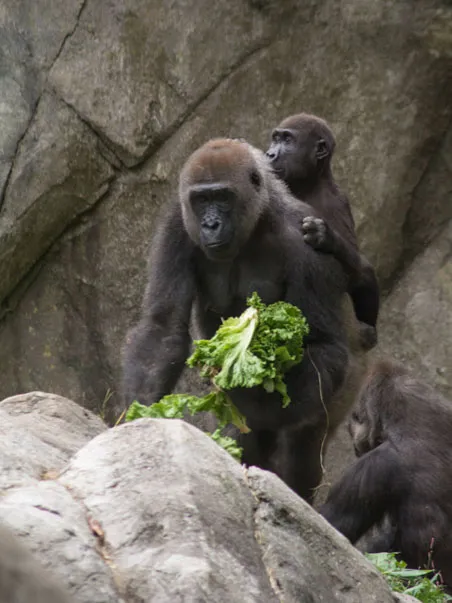
Left: Picture 2: Olympia with son Apollo foraging for food
The North Carolina Zoo is home to two adult female gorillas, Olympia and Jamani, their young sons Bomassa and Apollo (respectively), two additional young males, Hadari and Dembe, and a silverback, Mosuba.
NCSU student, Kelly Kosco, created a research project to test how enrichment items affected the foraging of our gorillas. Our gorillas already enjoy a variety of foraging opportunities (pictures 1 and 2), but we are always committed to working to extend time spent foraging. Kelly hypothesized (created an idea that can be tested) that time spent foraging could be increased if some of the gorilla’s daily food (leafy greens, green beans, carrots, and small pieces of fruit) could be placed into carefully chosen “enrichment items”. The gorillas would then be challenged to extract their foods, thereby increasing the total time spent foraging.
Kelly tested this by carefully recording the activity of the gorillas in response to five different types of items: two types of feeder balls (one with large holes and one with small holes), plastic logs, small gas cans, and burlap sacks. To evaluate the effects on an individual level, Kelly also considered the age and sex of the gorilla in her study.
In a surprising twist, Kelly found that foraging behaviors actually decreased when food was placed in these items! This is probably because we inadvertently aggregated the foods for the gorillas, and the challenge of extracting the foods was not enough to increase foraging time.
Importantly, Kelly did find, though, that the youngsters were more likely to play and engage with the enrichment items than the adults. And of all the items, the favorite was the burlap sack. Our Animal Management Supervisor for the gorillas, Chris Goldston, told me: “It is surprising how ordinary a burlap sack looks to us, but provides so much fun and entertainment for the gorillas.” He went on to say the young gorillas would play tug of war with them, or throw them over their heads and run around, almost like kids playing ghost. The adults would carry them on their shoulders or sometimes take naps on them.
In the end, Kelly was able to demonstrate, through scientific research, that while these specific food enrichment items were not useful for increasing gorilla foraging time, burlap sacks were a great new toy to add to the habitat!
Thanks for visiting my blog today! If you want to learn more about gorilla's, please check out the Saving Animals blog on gorilla health.
Below: young males Apollo and Bomassa enjoying an enrichment item
